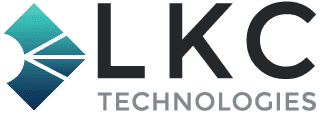Transcript
Matt Herman (Media MICE): One of the great things about eye care here in Asia is this strong tradition of early technology adoption here. Patients and doctors in APAC demand effectiveness. And when something performs, they embrace it with open arms. We’re here at the LKC booth to talk to two doctors about one device reshaping the retinal diagnostic landscape, the RETeval®.
Dr. Rosemayani: My name is Emma Rosemayani, I’m a glaucoma surgeon from Jakarta, Indonesia. And my latest research is I’m using RETeval. The main idea is to incorporate the electororetinography examination, comparing with OCT and Humphrey examination to detect glaucoma earlier than what we have right now. The result is quite promising and hopefully in the future it can give more benefit to more patients.
Matt: What’s it like using the RETeval in the clinic?
Dr. Rosemayani: RETeval is quite interesting because it handheld, very easy, especially in Indonesia because examination like OCT and Humphrey is not relatively accessible to our glaucoma patients. Based on my experience we can do it on children. And I also have done it in patients with nastygmus where the eyes keep moving. It’s not painful and it takes only about less than five minutes. It’s very different with the previous electororetinography examination.
Matt: Do you know any other surgeons or doctors who are using the RETeval?
Dr. Rosemayani: Doctors dealing with other ophthalmology departments, dealing with the optic nerve examination, optic nerve pathology. I think the future of the RETeval examination is very promising.
Matt: Any patients like really surprised at how easy it is?
Dr. Rosemayani: Sometimes they ask like “Is it done yet?” “Have you done the examination yet?” Yeah, yeah, it’s done. And then they just go straight home.
Matt: Perfect!
____________________
Matt: Hi, Dr. Dayang!
Dr. Dayang: Open your eyes big for me. This is a great equipment!
Matt: We’re here at the LKC booth at APAO 2023 with Dr. Dayang. Hi, Dr. Dayang.
Dr. Dayang: Hi!
Matt: And we are going to be using the RETeval. Have you ever used the RETeval?
Dr. Dayang: No.
Matt: When you first look at the device what do you think?
Dr. Dayang: Portable, that’s what I like the most. Almost weightless. Pretty small. Exactly!
Matt: I guess the most important thing is: Does it work? So let’s check it out!
Matt: Super comfortable!
Dr. Dayang: Wow, that’s nice!
Matt: It’s the first ERG in my entire life.
I’m super excited.
Dr. Dayang: Done!
Matt: It’s super comfortable but now I’m kind of nervous. It’s like too easy, right.
Monika Ranta (LKC): And you see the patient can blink so that’s not a problem.
Matt: That was pretty easy! I can take it off now. I’m nervous.
Monika Ranta (LKC): Everything is perfect!
Dr. Dayang: Wow, that’s nice! This is a great equipment because it is light, portable so I can use it in my clinic. When I visit other hospitals for consultations, in cases where I need to go for ICU visit then I can bring it along. It is very useful, I suppose, for patients who are unable to communicate or verbalize their response. Now we can get this result.
Matt: My first time getting it, it’s nice to have our first time with ERG RETeval together.
Dr. Dayang: The conventional ERG is very bulky, for children that is very scary. That wasn’t scary at all. This could encourage more doctors, especially pediatric doctors, to adopt this.
Matt: And of course when you get more measurements, then you get more detection.
Dr. Dayang: Exactly!
Matt: Thanks for stopping by, Dr. Dayang!
Dr. Dayang: Sure, thank you so much for having me!
Matt: Gracias al RETeval ERG, it sounds like we really have a technology that’s reliable enough for both the rigors of research and has all the flexibility that clinicians really want out of a quick diagnostic tool.
![]() Warning: This product can expose you to chemicals including lead, which is known to the State of California to cause cancer and birth defects or other reproductive harm. For more information go to www.P65Warnings.ca.gov.
Warning: This product can expose you to chemicals including lead, which is known to the State of California to cause cancer and birth defects or other reproductive harm. For more information go to www.P65Warnings.ca.gov.
Substance Tables:
The table below lists substances which may be contained within LKC’s RETeval and RETevet products. Substances listed as Type 1 are within permissible levels in one or more of LKC’s products. Substances listed as Type 2 are used in the production of some components used in LKC products and may be present at trace levels, but are typically destroyed during processing.
RETeval and RETevet Devices
| Substance | CAS # | Type | Listed as causing: |
| Nickel | 7440-02-0 | 1 | Cancer |
| Acrylonitrile | 107-13-1 | 2 | |
| Ethylbenzine | 100-41-4 | 2 | |
| Crystaline Silica | 14808-60-7 | 1 | |
| Lead | 7439-92-1 | 1 | Cancer Developmental Toxicity Male Reproductive Toxicity Female Reproductive Toxicity |
| Methylene Chloride | 75-09-2 | 2 | Cancer Female Reproductive Toxicity |
| Bisphenol A | 80-05-7 | 2 | |
| N-Hexane | 110-54-3 | 2 | Male Reproductive Toxicity |
